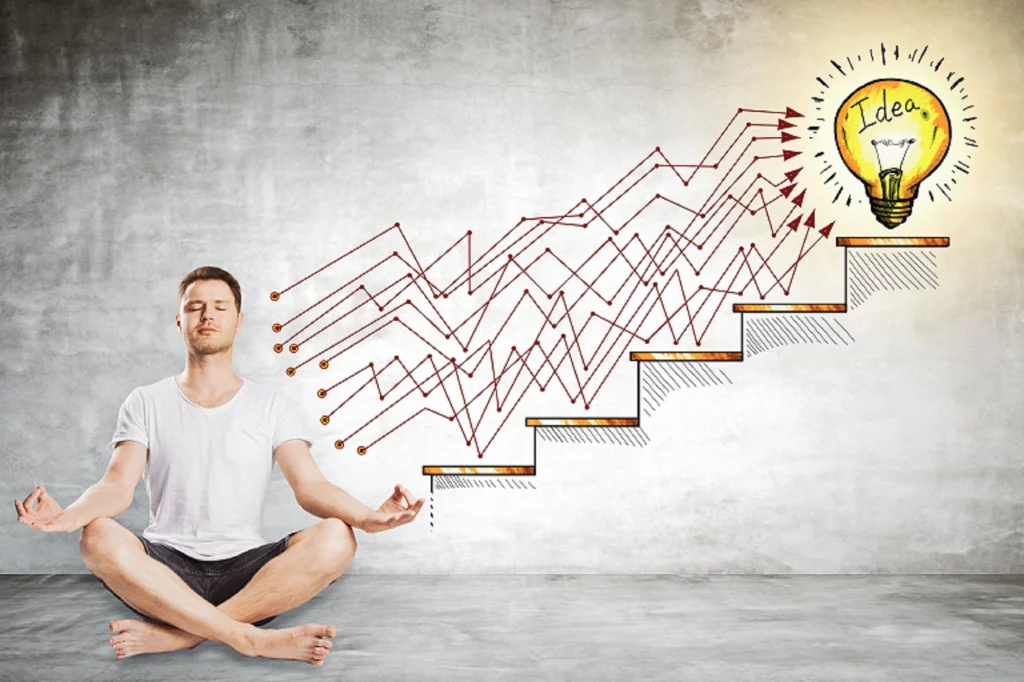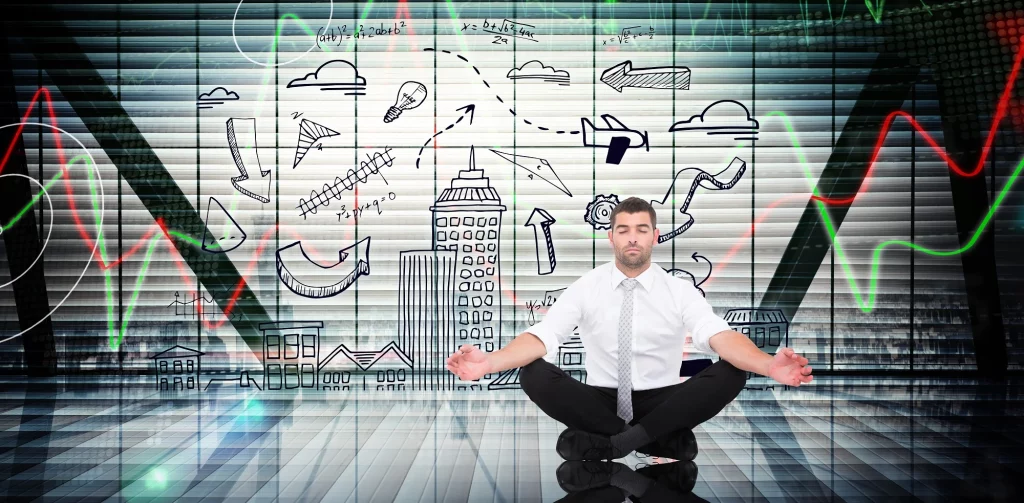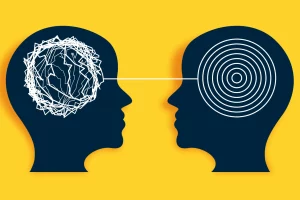
How to Beat Overthinking, Anxiety, and Anger: The Silva Method Techniques
In a world where AI disrupts job markets, inflation rises, economic activity slows, and the cost of living surges for the older population, we are faced with profound challenges. We recently posed this question to over 800 members of the Silva community during a seminar, and their responses surprised us. Rather than emphasizing the expected financial struggles, a majority of them expressed concerns about the often unspoken issues of overthinking, anxiety, and anger.
These emotions, which many of us can relate to, have the potential to take a toll on our lives. To address these challenges effectively, we must first seek understanding. In this blog, we will explore the interconnections between overthinking, anxiety, and anger, while discovering how we can harness the power of our minds to overcome them.

Let’s take a closer look into the roots of these emotions and explore practical techniques and mindfulness practices to regain control of our minds and find inner peace. By nurturing our mental well-being, we can navigate the changes around us with resilience and thrive in an ever-changing world.
What does it mean to be an “overthinker”?
If you find yourself constantly analyzing and dwelling on thoughts, situations, or problems, you may identify as an “overthinker.” It’s a habit that feels out of your control, where you overanalyze every aspect, focusing primarily on the negative outcomes. Sound familiar?

The consequences of overthinking can be significant, affecting your ability to make decisions and take action. Ignoring the symptoms, such as difficulty concentrating, handling uncertainty, or experiencing a blank mind, may prevent you from seeing the bigger picture. Here are some common symptoms and consequences of overthinking :
Physical and Other General Signs of Overthinking–
-
- Constant worrying
- Negative thinking
- Perceiving situations as threatening
- Difficulty concentrating and handling uncertainty
- Trouble sleeping
- Fatigue
- Nervousness and irritability
- Nausea
If left unsolved, overthinking can lead to
-
- Heightened Anxiety
- Reduces decision-making
- Lack of Mindfulness
- Worsening sleep patterns
- Impaired problem-solving skills
While these consequences may seem daunting, it’s important not to overthink them further. Instead, we offer a range of mind control techniques and solutions to help you distance yourself from these consequences. By understanding the roots of overthinking, exploring mindfulness practices, and implementing them, you can regain control of your mind and find relief from the burdens of overthinking. But do you know how it starts? Let’s discover.
Why does it happen to You?

There are various reasons why overthinking can occur, and they may differ from person to person. However, two common catalysts can lead to a shift in thinking patterns and contribute to overthinking. Let’s delve into them in detail.
Firstly, overthinking can be triggered by past traumatic events that are challenging to overcome, such as failures, rejections, or abandonment. When we go through such situations, we tend to avoid similar outcomes and fear repeating those experiences. As a result, we find ourselves overanalyzing every situation, trying to draw parallels between the current scenario and our past, in an attempt to protect ourselves from potential harm.
Secondly, some individuals naturally tend to overthink due to their cognitive patterns. Research indicates that people with highly analytical minds seek to understand every detail of what may happen next. They create their scenarios, both positive and negative, based on the unpredictability of the future. Unfortunately, many individuals struggle to manage these thinking patterns and find themselves spiraling into overthinking.
What is the connection between overthinking, anxiety, and anger?

Are these emotions interconnected? It is possible for heightened anxiety to lead to overthinking, just as excessive overthinking can trigger anxiety. Additionally, unresolved anger can fuel overthinking, and overthinking, in turn, can amplify anger. Therefore, it is safe to say that these three emotions often complement each other and can contribute to a cycle of distress. Now let’s break down these emotions to understand their influence

Anxiety is a common emotion characterized by feelings of unease, worry, or fear. It typically arises in response to perceived threats, whether real or imagined. While it is normal to experience some level of anxiety in certain situations, such as before a job interview or during a challenging event, it is a matter of concern when it becomes excessive and interferes with daily life.
Heightened anxiety often involves a heightened state of arousal, which can lead to overthinking. Individuals experiencing anxiety may continuously analyze and ruminate on potential threats, negative outcomes, or worst-case scenarios. Anxious thoughts fuel the cycle of overthinking, intensifying the sense of worry and apprehension.

Anger, on the other hand, is a natural and intense emotional response to a perceived threat, injustice, frustration, or provocation. It involves a range of psychological and behavioral changes and can vary in intensity, duration, and expression from person to person.
When anger is suppressed, unresolved, or unexpressed, it can contribute to overthinking. Holding onto anger without addressing it directly can manifest as repetitive thoughts, grudges, or a perception of injustice. The unresolved anger becomes a focal point for overthinking, leading to rumination and potentially intensifying feelings of frustration and resentment.

Conversely, overthinking itself can be a source of anxiety and anger. Engaging in repetitive and negative thought patterns generates stress and anxiety. As you become trapped in a cycle of analyzing and obsessing over your thoughts. Similarly, constantly replaying and dwelling on anger-inducing events or situations keeps the anger alive and prevents any forward progress.
Understanding the complex interplay between overthinking, anxiety, and anger is crucial in breaking free from their grip. Now would you be surprised if we tell you that you can overcome such emotions just by harnessing the power of your mind?
The Silva Method offers mind control techniques that aim to unlock the hidden potential of the mind. As America’s first personal growth program, it has helped millions of individuals overcome stress and anxiety, succeed in personal and professional life, and foster meaningful relationships. However, one of its core principles is conscious living. To address spiraling thoughts, the Silva Method suggests entering an altered state of the subconscious mind. Yes, you read it right! No therapy, expensive appointments, or lengthy medication courses. The Silva Method believes that everyone possesses untapped potential, which can be harnessed to conquer challenges. Thus, by accessing the alpha level, an altered state of consciousness, you can stop the cycle of overthinking and find solutions to your problems by simply reprogramming your subconscious mind.
How to stop overthinking?

Here is an excellent Silva method technique for entering the alpha state- It’s called the Silva 3-2-1 Deftness technique. It relies mainly on breath control and counting. To begin with, play the alpha soundwaves in the background, sit comfortably with your eyes closed, and follow the steps mentioned below:

-
- To loosen up first take a few deeper inhales and exhale slowly.
-
- Now once you feel relaxed, slowly turn up your eyes at a 45-degree angle. This helps encourage your brain to enter your Alpha level.
- Since there are 3 levels of this technique, Level 3 is for physical relaxation. You can learn to relax from head to toe in a matter of seconds.
-
- To enter the physical relaxation level 3, take a deep breath, and while exhaling, mentally repeat and visualize the number 3 several times and you are at level 3.
-
- Level 2 is for mental relaxation, where noises will not distract you. Instead, noises will help you to relax mentally.
-
- To enter the mental relaxation Level 2, take a deep breath and while exhaling, mentally repeat and visualize the number 2 several times, and you are at Level 2.
-
- To enter Level 1, the Basic Plane Level, take a deep breath, and while exhaling, mentally repeat and visualize the number 1 several times.
You are now at Level 1, which you can use for a purpose, any positive purpose you desire.
Entering the alpha level, also known as Level 1, brings about a profound shift. It will feel like you are stepping into a tranquil oasis within your mind. In this state, you experience a heightened awareness of your inner self, tapping into a realm of clarity, creativity, and intuition. The power of this level lies in its ability to reprogram the subconscious mind with positive desires, allowing you to cultivate personal growth, self-discovery, and transformation.

Living consciously with purpose becomes possible through the techniques employed at the alpha level, leading to a fulfilling life. The effectiveness of these techniques is evident from the experiences of over a million Silva graduates and community members who have successfully utilized this altered state of mind to manifest their desires. Some have awakened their creative abilities, others have enhanced their intuition, and many are now living mindfully. The dynamic nature of these techniques accommodates individual purposes, enabling each person to fulfill their unique aspirations.
Despite the potential for positive change, it remains puzzling why a significant 80% of the population still grapples with stress and anxiety.
While overthinking has been identified as a contributing factor, it is essential to explore other causes that contribute to these conditions. By understanding the multifaceted origins of stress and anxiety, we can develop comprehensive approaches to address and overcome them.
What gives rise to stress and anxiety?

Various common reasons can contribute to increased stress levels and make a person anxious. One such factor is work pressure and the constant need to meet societal standards. The high demands at work or in personal life, along with the pressure to meet deadlines and performance expectations, can significantly contribute to these feelings of stress and anxiety.
Moreover, significant life events, such as financial difficulties, relationship challenges, or major life transitions, can also trigger stress and anxiety due to the uncertainty and disruption they bring. As we age, health concerns can arise, further adding to the stress. Even witnessing your loved ones facing serious health issues can also cause stress and anxiety.

In addition to that, traumatic experiences from the past, such as accidents, relationship abuse, or the loss of a loved one, can have long-lasting effects on mental well-being, leading to ongoing stress and anxiety. Negative thought patterns, including self-doubt, perfectionism, and a constant focus on potential threats or failures, can further fuel these feelings.

These factors are common and unavoidable aspects of human life. Certain life events can leave emotional scars, making it challenging to move forward. However, one common mistake we often make as humans is ignoring the long-term effects that these life events can have on us. When we leave these feelings and emotions unaddressed, they can invite abnormal changes in our body, mood, and general behavior, which in turn disrupt our mental health. Let’s take a look at what stress and anxiety can lead to if not addressed with proper care.
-
- Muscle tension or pain
- Stomach upset
- Sleep deprivation
- Overeating or undereating
- Social withdrawal
- Anger outbursts
- Feeling overwhelmed
- Restlessness, sadness, or depression
- Irritability and heightened anger
Anger and anxiety are often interconnected, although the direct influence of anxiety on anger has been relatively unexplored.
Can anxiety make you Angry?

While anger may not be a common symptom of stress and anxiety, it is frequently associated with anxiety disorders. A Population-based research has revealed that the relationship between anger and anxiety is distinct from that of post-traumatic stress disorder (PTSD) or panic disorder (PD).
Individuals with anxiety disorders tend to experience more outbursts or expressions of anger. This suggests that people with anxiety disorders are more susceptible to intense anger compared to individuals with other mental health conditions. The constant frustration stemming from the impact of their disorder on their lives can contribute to these anger episodes. Furthermore, a person with anxiety disorders may become easily irritated by minor issues, leading to a buildup of overwhelming emotions, worry, and fear. This heightened sensitivity can make it challenging for them to ignore matters that they might typically be able to dismiss morally or logically.

The presence of anger in individuals with anxiety disorders highlights the complex relationship between these emotions. It underscores the importance of addressing both anxiety and anger in treatment approaches to provide comprehensive support and improve overall mental well-being. Hence, to find greater emotional balance and lead a fulfilling life, it’s crucial to address the underlying anxiety and provide appropriate coping mechanisms for managing anger.
How to calm your mind when frustrated?

With the Silva Method, achieving emotional balance and overcoming mental challenges becomes easier than ever before. Our dynamic meditation techniques empower you to build resilience and reprogram your mind. Whether it’s an addiction, recovering from physical illnesses, or achieving personal and professional goals by overcoming obstacles, Silva method techniques allow you to conquer them all.

One profound technique that has proven effective in millions of cases is the “Mirror of the Mind.” This technique is widely used for healing and problem-solving, offering a simple yet powerful approach. It involves visualization of your problems and their solutions, combined with affirmations at the alpha level.
Step 1. Enter Level 1 using the 3-2-1 technique.
Step 2-Once you are at Level 1, you need to visualize on your mental screen a full mirror. This will be known as the mirror of the mind.
Step 3-The size of the mirror can be changed depending on the problems that you’re going to visualize. It can be a person, a thing, or any small or large scene.
Step 4-The color of the mirror can also be changed from blue to white. Blue denotes your existing situation or the problem that you visualizing.
Step 5-The white frame denotes the solution to your problems or the ultimate goal that want to achieve. This requires you to imagine and create the solution in the white frame.
Step 6-Now visualize the blue framed mirror at the center of your mind and project the problem situation and make a good study of it. Visualize what caused it and how you get into that situation.
Step 7-Once you painted a picture of the problem situation, erase the problem image and move the mirror to the left. Step 8-As you change the position of the mirror, change the color of the frame to white. Now imagine the solution image on the white framed mirror.
Mirror of the Mind: Manage Anger Outbursts and Expressions

Once you have established the solution image in the white-framed mirror of your mind, it becomes your anchor and point of focus. Whenever the image of the problem triggers you, shift your attention immediately to the solution image. Visualize it with clarity and immerse yourself in the feeling of achieving the desired outcome. By dedicating your time and energy in meditation solely to the solution image, keep your eyes firmly fixed on the goal, ensuring that obstacles fade away.

During this programming process, it is crucial to maintain a positive attitude and envision yourself in a state of good health. Cultivate the conviction that you can achieve anything and everything using these powerful techniques. Picture yourself overcoming challenges and manifesting your goals effortlessly.

If you desire to delve deeper into the technique, you can explore further levels of consciousness. By focusing on the deepening aspect, you can access even greater depths within your mind. The more you engage with the practice and direct your attention towards deeper exploration, the more profound your experience becomes.
One of the remarkable aspects of the Silva Method is its flexibility and unique approach compared to other meditation courses. While most techniques require your brainwave frequencies to be in the theta range, the dynamic meditation techniques of the Silva Method are performed at the alpha level. Alpha-level meditation is gentle on your brain, awakening your mind, intelligence, and creative senses.

However, what has been shared here is only a glimpse of the complete Silva Method. If you are eager to master all the techniques and unlock your full potential, we offer an excellent membership plan designed to provide comprehensive access to all the courses from the comfort of your own home, right at your fingertips. This integrated plan combines multiple courses, empowering you to break free from stress, anxiety, and anger, leading you on a path of epic transformation.
Join the Silva Method membership today and embark on a journey to transform your life. Break free from the chains of negative thoughts and emotions, and contribute to making this world a better and kinder place. The Silva Method awaits you, ready to guide you toward a state of inner peace, personal growth, and limitless possibilities.




